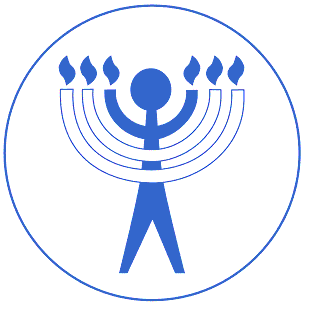The Jewish Humanist, February 1999
February is Brotherhood (and Sisterhood) Month in America. It is a useful time to celebrate the diversity which is part of American life. Our country, like most of the nations of the world, is no longer ethically or religiously uniform. It is a composite of people from all over the planet.
The original concept of a nation was that of a community of racially identical people with shared ancestors and shared memories. The Israelites of the Bible conformed to this model. Birth was the only legitimate entry into the nation. If strangers lived in the midst of the community, they were merely tolerated aliens. Modern Japan preserves this hostility to foreigners.
When America began, the nation was overwhelmingly homogenous in both race and religion. Anglo-Saxon Protestants predominated. Native Americans were excluded. Africans were viewed as sub-human. And the few Germans in Pennsylvania hardly counted. Jews and Catholics were too few in number to make any difference.’
Two hundred years later America is vastly different. Anglo-Saxon Protestants are a minority. Native Americas and Africans have been absorbed into the body politic. Catholics have become the largest religious denomination. And the largest Jewish community in the world is settled in the major cities of America. Over the last two centuries millions of immigrants from Europe, Asia and Latin America have come to live in this country. Their descendants have changed the racial and religious face of the United States. In many parts of our nation it is impossible to find any ‘original’ Americans.
What has happened to America is also the story, of many other advanced nations who have attracted large numbers of foreign immigrants because of urbanization and economic opportunity. The immigrants need jobs. The hosts need cheap labor. Mobile urban communities accommodate newcomers far more easily than traditional peasant communities. The Indians and Palestinians in England, the Algerians in France and the Turks in Germany – all of them testify to the new diversity among the prosperous nations of the Western world.
But this diversity also exists in the Third World. Brazil is a stew of invading Europeans, imported Africans and natives. All over Latin America and Africa white invaders have left mixed communities. Both in Asia and Africa the national boundaries drawn by colonial conquerors ignored the historic boundaries between ethnic groups. Nigeria is a country with five significant nations. India is a coalition of at least fifteen. The Congo is a nightmare state that embraces dozens of different tribes which hate each other.
The consequences of all this mixing is the emergence of a distinction between nationality and citizenship. Your nationality is your ethnic origin. Your citizenship is your territorial allegiance, the land which claims your political commitment. Modern territorial states are different from historic nations. They are often composed of people who no longer share a long-run common history or even a single language. States like Canada, India and Peru feature more than one territorial language.
All this change is accelerated by the increasing mobility of the world population. Modern technology has reduced our planet to a global village. Air travel has shrunk distance. And computer slaves enable people from faraway places to communicate with each other as though they were ‘in the same room’. The new ‘intimacy’ reduces fear, increases the sharing of ideas and goods and encourages people to explore new venues. The incredible rise in the number of international travelers is a prelude to the more permanent migration of millions of people.
In such a ‘global’ world territorial states do not have the opportunity to integrate their ‘diverse populations’ into some kind of nationality. Instead, a new international culture is arising which transcends national boundaries and which embraces the urban residents of the world. Much of their international culture is derivative from American culture. Skyscrapers, expressways and jeans are no longer American. They bear no national identity. They are the artifacts of an emerging international community.
The evolution of territorial states and an international culture does not obliterate differences. As group conformity dissolves individual difference is enhanced. Some people eat Italian food on Monday and Thai food on Tuesday. Others choose Chinese food for Monday and Mexican food for Tuesday. Some people choose to master English as their second language. Others choose to learn Spanish. Many Jews enjoy Christmas. Many Christians find meaning in Passover and the Seder.
As societies become more pluralistic, the boundaries between nationalities and religions do not dissolve. They become softer, more flexible, more ‘individual friendly’. While many traditionalists view this development with honor, liberals see this development as a way of breaking down the age-old hostilities between groups. Once self-righteousness and the fear of strangers diminish, the possibility of building an international community emerges. What was once a utopian ‘fantasy’ is at the beginning of its realization.
Of course this new mixing has its negative diversity. Racism and bigotry thrive in environments where old boundaries break down and where traditional belief systems are threatened. Both the rise of intense nationalism and religious fundamentalism are responses to the traumatic changes engineered by this social revolution. At a time when people should be optimistic, all these fierce reactions make them think that the world is falling apart.
As we celebrate Brotherhood and Sisterhood month in America let us understand that the old monocultural America is gone. We Jews are no longer strangers in an Anglo-Saxon country. We are one of the vital options in a diversity of free and open choices. America is our home, as is the world.

